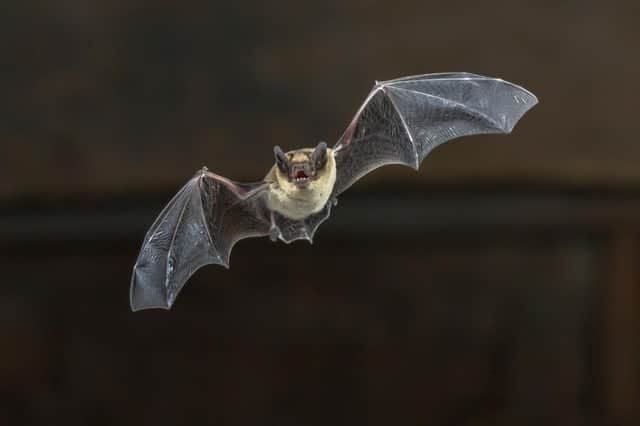Bats pose no 'higher threat' of spreading viruses say researchers


Scientists at the University of Glasgow say the likelihood of emerging viruses spreading to humans from animals may not depend on the specific animal reservoir of the original virus.
Like the current pandemic caused by the coronavirus SARS-CoV-2, which is thought to have originated in bats, most emerging infectious diseases are zoonotic viruses – diseases that spread from animals to infect humans.
Advertisement
Hide AdAdvertisement
Hide AdAs the impact of COVID-19 shows, emerging infectious diseases can seriously threaten human lives and livelihoods globally. Therefore, understanding which groups of animals or viruses pose the greatest risk is important for combatting new threats.
New research, led by the MRC-University of Glasgow Centre for Virus Research and the Institute of Biodiversity, Animal Health and Comparative Medicine at the University of Glasgow published yesterday, shows for the first time the risk of zoonotic viruses spreading to humans is largely the same across diverse groups of animal reservoirs.
The study found that the proportion of viruses that are zoonotic does not significantly differ across 11 major orders of birds and mammals.They also found that the number of zoonotic viruses linked to each animal order appeared to be a consequence of species richness: more diverse animal orders hosted more viruses in general and by extension, more zoonotic viruses.
These findings suggest previous scientific thinking – that certain animal reservoirs, such as bats, pose a heightened risk of spreading viruses to humans – may not be accurate.
Advertisement
Hide AdAdvertisement
Hide AdInstead, scientists now believe that it is the characteristic traits of the viruses, rather than their animal hosts, that will be the more useful predictors of zoonotic transmission.
Dr Daniel Streicker, Senior Research Fellow at the Institute of Biodiversity, Animal Health and Comparative Medicine, said: “The recognition that several high-profile viruses originated from bats triggered tremendous interest in whether there was something special about their ecology or immune systems which makes their viruses disproportionately likely to infect humans.
“Our finding that the number of zoonoses that have emerged from bats is about what would be expected for any mammalian group of their size casts doubt on the idea that traits of bats produce viruses with a heightened propensity to infect humans.
“To know if there is anything special about bats, we now need to understand whether the bat viruses that do jump to humans cause more severe disease or spread better among humans than viruses from other animals, which is currently uncertain.”
Advertisement
Hide AdAdvertisement
Hide AdThe coronavirus emerged in Wuhan, China, at the end of 2019, where there was a cluster of cases at an animal market.
The coronavirus, officially called Sars-CoV-2, is closely related to viruses that infect bats, however it is thought the virus was passed from bats to a mystery animal species that then passed it on to people.
That “missing link” remains unknown, and could be a source of further infections.
Dr Nardus Mollentze, Research Assistant at the Centre for Virus Research, added: “Although bats will and should remain a focus for viral reservoir research, as the likely origins of major zoonotic pathogens such as SARS-CoV-2 and Ebolaviruses, our work shows that the proportion and number of zoonotic viruses in bats is not unusual compared to other mammalian groups.
Advertisement
Hide AdAdvertisement
Hide Ad“This means that ongoing efforts to identify potential future threats to human health by screening animals for undiscovered viruses will need to focus on a much wider range species than is currently the case.
“Our study also highlights the need to find new traits of viruses that can help us anticipate their zoonotic potential, since knowledge of the current reservoir was not helpful to predict whether a virus might infect humans – even when the reservoir is closely related to humans.”
The paper ‘Viral zoonotic risk is homogenous across taxonomic orders of mammalian and avian reservoir hosts’ is published in Proceedings of the National Academy of Sciences.
Comment Guidelines
National World encourages reader discussion on our stories. User feedback, insights and back-and-forth exchanges add a rich layer of context to reporting. Please review our Community Guidelines before commenting.